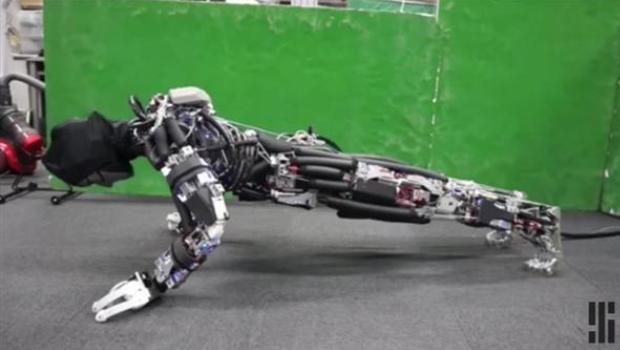Kengoro is a Japanese human robot which operates on 108 motors and does a wide range of functions including pushups. The motor of the humanoid gets up with usage and the Japanese researchers have devised a way to overcome this problem. They have infused artificial veins in the 3D printed metal bones of the robot. This cools down the robot’s body whenever it gets heated.
Overheating is a huge robotics challenge. The robot has been equipped with a technology based on the human body which too needs to dissipate excess heat to cool down. Kengoro has a similar system, and his ‘sweat’ evaporates from his mechanical bones. As a result, he can do push-ups for 11 minutes continuously, without overheating, and that too for less than a cup of water.
This robot was designed in the laboratory of the University of Tokyo. It was presented at the IROS 2016 in Daejeon, South Korea. The functions, working and the components of the robot were explained in the paper “Skeletal Structure with Artificial Perspiration for Cooling by Latent Heat for Musculoskeletal Humanoid Kengoro” by Toyotaka Kozuki, Takuma Shirai, Hirose Toshinori, Shinsuke Nakashima, Yuki Asano, Yohei Kakiuchi, Kei Okada, and Masayuki Inaba.
The sweaty solution that is used for the robot is very potent and does not increase the body weight. The Kengoro weighs 56 kgs and is 1.7 m tall. Professor Masayuki Inaba and his team incorporated the cooling system inside Kengoro’s metal frame without adding any additional weight to the robot’s body.
Kengoro’s frame is made of aluminum powder and the robot genuinely sweats. It is a very active robot and uses a cup of de-ionized water for working half a day. A laser sintering 3D printer was used to devise the robot’s frame. This air cooling method is better than traditional cooling methods and does not add to the additional body weight, thanks to the 3D printing mechanism.
Source: 3ders.org
